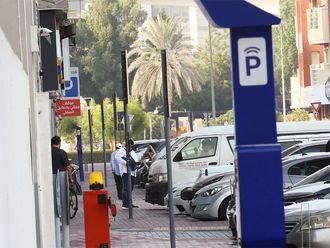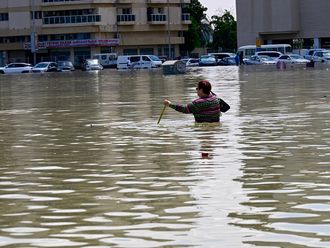Dubai: The much anticipated Dubai Tram opens for public service today (Wednesday), joining a burgeoning network of integrated public transport systems that also includes the world’s largest diverless Metro, one of the region’s best bus services as well as a wide array of marine services.
The abra, considered the earliest mode of public transport, has been in service for a long time and the small traditional boats, albeit motorised now, are still hugely popular, transporting around 10,000 people daily across the Dubai Creek.
However, what could be considered modern means of public transport started in Dubai through five buses in 1968.
More than 45 years since that major milestone, Dubai continues to be the pioneer in building modern infrastructure and adopting the latest means of mass transit.
For years Dubai was the only city in the region to have a well-oiled public transport network served mainly by buses.
By 2001 Dubai’s bus fleet grew to 305, covering almost 50 per cent of the urban areas.
As the city has grown dramatically since the beginning of the new millennium, its bus fleet has grown fivefold, with a current strength of 1,565 buses, almost doubling the areas covered.
Despite the humongous growth in the bus network something was lacking.
Realising the need of the hour, the government of Dubai formed a separate entity – the Roads and Transport Authority (RTA) – to develop new mass transit systems that will cater to the ever-growing needs of the emirate.
Within eight years RTA has managed to transform the landscape of Dubai’s mass transit by introducing new modes of transport and taking major infrastructure decisions.
The city’s public transport network got a major boost with the launch of Dubai Metro in 2009.
Within months hundreds of thousands of people shunned their personal cars and opted for the convenience of the Metro.
The 74.2-kilometre-long driverless network, spread across the city in two lines, now transports 500,000 people daily and the number is growing every day.
Transporting in excess of 500 million passengers in five years, the mass transit system has quickly become the most popular and convenient medium to travel in Dubai.
“Almost 80 per cent of Metro commuters don’t own cars, which has significantly helped in reducing traffic on roads,” said Mattar Al Tayer, Chairman of the Board and Executive Director of RTA.
Following the launch of the Metro and an expanded network of buses that complements the railway, Dubai’s modal share of public transport has grown to 14 per cent from a mere six per cent in 2006.
“The Metro has contributed effectively towards enhancing the living and business conditions in the emirate. Since its inception on September 9, 2009, Dubai Metro’s daily ridership has increased more than sevenfold. The number of average daily passengers has increased from 60,000 passengers per day in 2009 to approximately 500,000 passengers per day in 2014,” added Al Tayer.
Working as an integrated system, the combination of buses, Metro and the marine transport system now cover around 85 per cent of the emirate’s urban area, supporting more than a million people daily.
Served by 47 stations the Metro is well connected by a feeder and urban bus service and onward journeys between buses and Metro stations are counted single trips without the commuters having to pay extra.
At several locations, Metro, bus and marine stations are built in close proximity to each other, allowing commuters to hop on and off between different modes.
Apart from abra, the marine modes of transport include the waterbus which was launched in 2007. As many as 15 waterbuses ply Dubai Creek and Dubai Marina.
In 2010, RTA launched water taxis that operate across the Creek as well as along the shoreline in Jumeirah, Al Sufouh, Dubai Marina and Al Mamzar.
Further expanding the marine transport, 100 passenger ferries were launched in 2011, with five of the boats plying from Dubai Creek and Dubai Marina.
As many as 14 million passengers use marine transport in Dubai annually.












